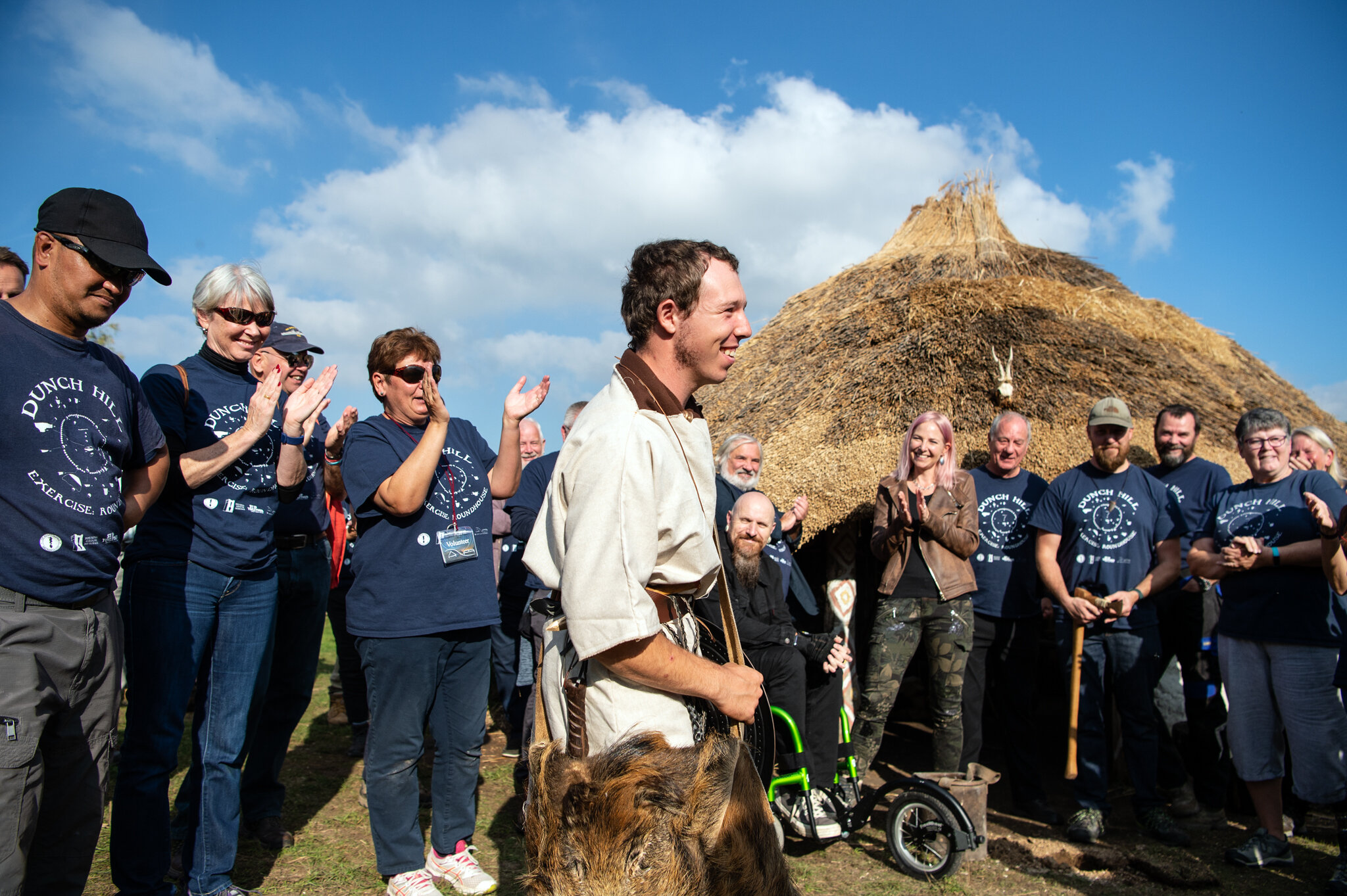The Bronze Age Blog - Session 16 - the thatch is complete!
Project Archaeologist Trevor gives an update on the latest with the Bronze Age house as the challenging job of thatching is completed!
We’re delighted to be able to report that our Operation Nightingale Bronze Age roundhouse is now all but finished. The crowning glory was the completion of the thatching of the roof this week. The entire team was involved in some way shape or form in the quite long and involved task of putting the conical roof onto our sturdy oak frame and then covering it with a few tons of water reed.
While it was very much a team effort, special shout-outs have to go to Darren Hammerton, treewright extraordinaire, and Lyle Morgans, Master Thatcher, who helped us get things started on the right foot. Also to John, one of our fantastic Operation Nightingale vet volunteers who took to thatching like a duck to water, and to Barnaby and Sarah, our two semi-resident archaeology students seconded from Bournemouth University for experience and slavery in the cause of experimental archaeology, who have also done sterling work in, on, and around the roof. And no-one will begrudge the biggest ‘for he’s a jolly good fellow’ being sung for Will, Butser’s own Man for all Seasons and all round great guy. Will has wrestled with what has turned out to be a very difficult, at times infuriating (expletives deleted) roof to build and thatch, and has come through scarred but unbeaten. Well done all!
Will Receives a well deserved round of applause at our Bronze Age celebration event (photo Harvey Mills)!
Why, I hear you ask, was the roof so difficult? Well, the main reason was the odd shape of the building. We call it a ‘roundhouse’, because it is an example of a type of structure favoured throughout the Bronze and Iron Ages (and beyond) in Britain and Ireland which were, more or less, round (in another striking example of the razor-sharp intellects native to all archaeologists, they are therefore called ‘roundhouses’). We also call it a roundhouse because it is a lot snappier than calling it an ‘irregular nonagon’, which is, in fact, what it is.
The thatching continued in all weather! Here’s student Barnaby on the roof.
So, what might this difficulty in building and thatching our irregular roof tell us archaeologically? The obvious answer is that the builders who built the original were dodgy. But, if you tip me upside down and pour cold tea down my nostrils, I will admit that I don’t think that’s the case. For one thing, there were other roundhouses found near ours that were impressively round and symmetrical – so they definitely knew how to craft a circular building (next time we’ll build one of these…). I am inclined to think there was a reason for the fact that some sides are longer than others (yes, sides, it’s a roundhouse with sides. Well, it’s an irregular nonagon with sides). We joked about making individual, custom length sides to accommodate particular pieces of furniture – a sideboard over there, next to the chaise longue on the long wall - that sort of thing. But jokes aside, why not? What I am even more convinced of, though is that – assuming our building did indeed have a roof (and that is always an assumption, as there is only fairly seldom direct evidence for them in prehistoric archaeology) – the Bronze Age builders built a roof in some way different from ours. So, if we DO ever build another irregular roundhouse (that’s a big if and I hope Will doesn’t read this too soon), then it’s a fair bet we will try a different experimental approach to putting a lid on it.
To follow more about our Bronze Age house project you can watch behind-the-scenes documentaries on our online platform Butser Plus whilst supporting our ongoing work.



